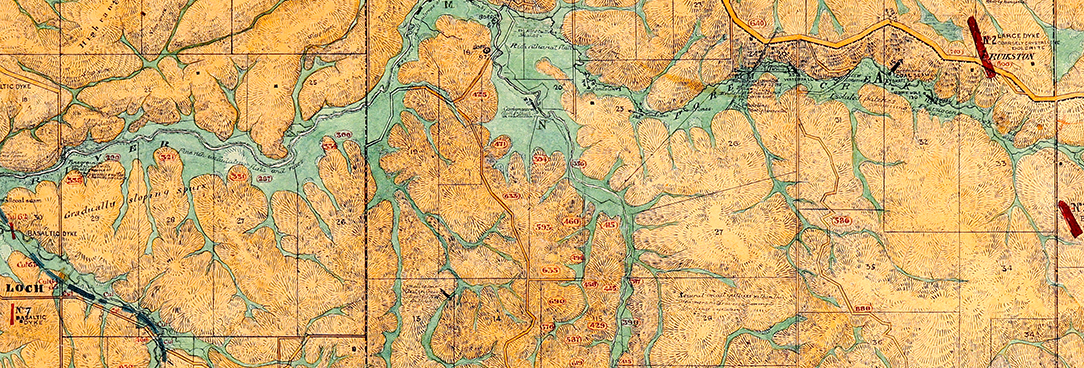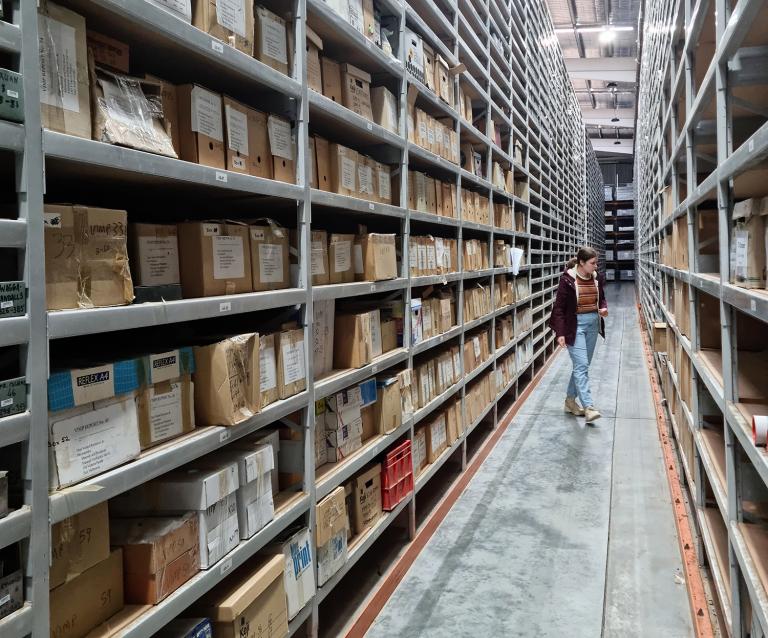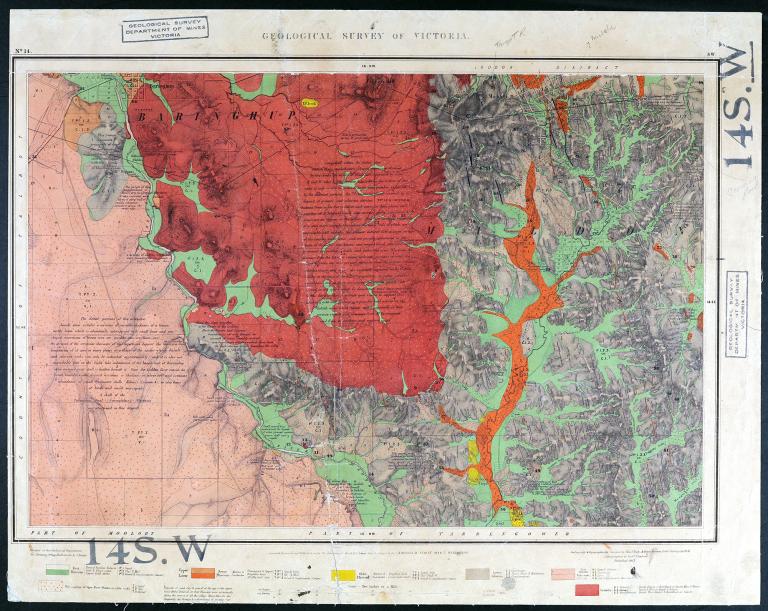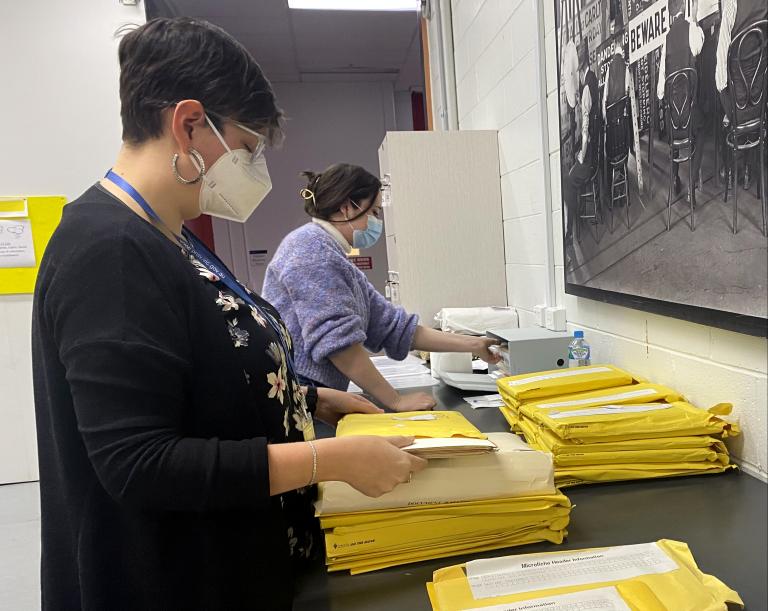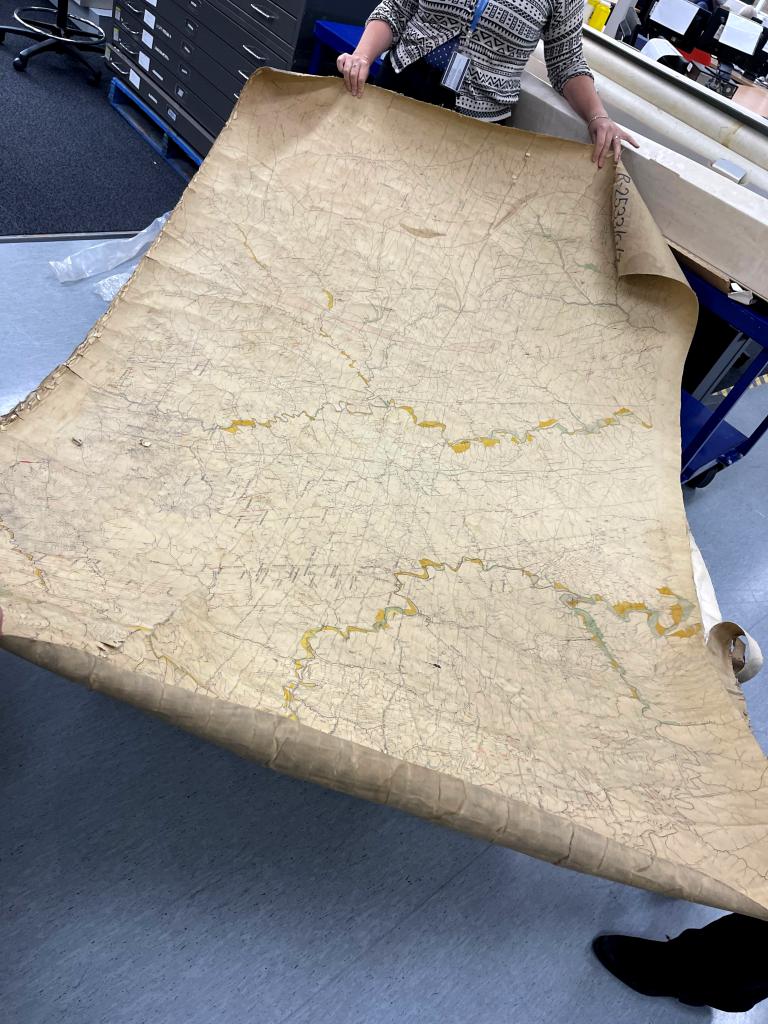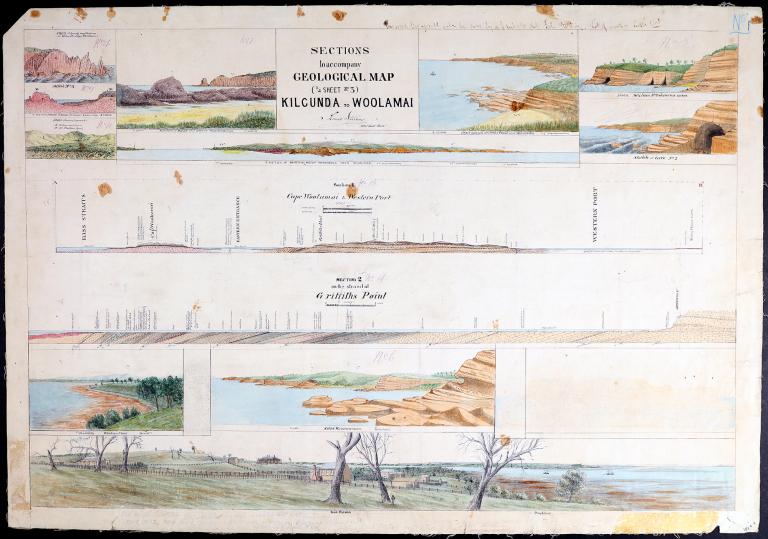
Author: Natasha Cantwell
Communications & Public Programming Officer
Over the past decade, Public Record Office Victoria (PROV) has worked with the Geological Survey of Victoria (GSV) to describe and transfer to PROV relatively small tranches of 19th and 20th century mining maps and plans. Despite this past transfer activity, PROV knew that a much grander archival project was needed to preserve the entire collection of geological records and make them accessible to the broader community. I spoke to a project team of PROV archivists about what’s been happening with this important collection of historical records.
After obtaining archival advice from PROV, in 2020 GSV secured funding to commission PROV to re-house, describe and transfer the permanent value records from GSV’s Drill Core Library into the Victorian Archives Centre. The project was delayed due to the COVID-19 pandemic but was finally underway by early 2022.
The Drill Core Library is an expansive industrial warehouse in Werribee, filled with machinery, forklifts and rock samples. Recalling their initial reaction to the facility, the project team noticed it was a dusty worksite, with geologists coming in and out, and no climate or pest control.
“Occasionally we’d open a record and a dead spider would fall out, sometimes a live spider! It was a good facility for storing samples of core but not for storing fragile historical paper records. But GSV had retained the records, and in the main they were still readable, mould free and well organised, that’s a really good thing.”
It was immediately obvious that these records were at risk of damage or deterioration in their current storage facilities, and through examination of the documents, maps and photographs, it was also evident how important this large collection was to the State of Victoria. Established in 1851, Geological Survey of Victoria is the oldest continuous government agency in Victoria, and its records provide evidence of mining exploration as well as the composition and features of the land over time. This information is not only relevant for anyone examining the past, but also for future industry.
“It’s 170 years’ worth of geological records, so this is very significant. We were so thrilled that the GSV was committed to the transfer of the records from the Drill Core Library to PROV! Our main goal was to get the records into PROV’s purpose-built, clean, dust-free environment with stable climate control at the Victorian Archive Centre, and to re-house them in archival-quality storage. But also to describe them so they can be found and used by researchers, because there’s no point in holding the records if they can’t be found.”
The funding secured by GSV enabled PROV to assemble a project team of archivists to work on the transfer and documentation of the records into PROV custody. Working as a group has been essential, not just because of the scale of the project (a massive 27 160 items across 34 series!) but also the size of many of the records. The roll maps for example, required multiple people to safely handle them, as they were transported, examined, and re-housed into archival bags and boxes.
“It’s a very physical and time-intensive exercise. There’s no other way around it! You also need to bounce ideas off each other because it’s easy to get your blinkers on and become hyper-focused. For us to have accomplished all this, it’s very much a team effort!”
In order to make the records easily discoverable in PROV’s online catalogue, the team went about their work arranging, re-housing and describing the collection of geological records. Much understanding could be gained from the team simply familiarising themselves with the physical records, picking out keywords and making connections across the different series. However, they were also grateful for the help from specialists, including a cartographer who had worked at GSV since the 1990s and was able to provide insights into why certain maps or plans were developed and how valuable they were. The project team’s aim was to input just enough information to make the records discoverable to future researchers, regardless of whether they were a specialist or a lay person.
“As archivists we need to ensure the records are preserved and accessible, but we don’t go through every single folio within a file. We just describe the file, so that’s where we’re leaving some gems for researchers to discover. We don’t do any interpretation of the files, or offer any judgement, that’s where historians come in.”
Now with the transfer complete, the project team are excited to finally share this collection, highlighting the value they'll have to the general public, far beyond technical uses. From aerial photographs, through to detailed written descriptions of the land, they’re an extensive record of the changing Victorian landscape, both above and below the surface. The team have different favourite records within this wide-ranging collection, however they all agreed that there was something special about the meticulously rendered 19th century drawings and maps.
“Many are visually very beautiful, they’re painted in watercolours and are quite artistic. The artists have put their own spin on them. This is a very rich resource that we’re now adding to PROV’s collection to make available to researchers for years to come.”
The Geological Survey of Victoria records can be ordered through PROV's catalogue to view in our North Melbourne Reading Room. Digital copies can also be ordered through our copy service. Click the links below to explore this collection.
Material in the Public Record Office Victoria archival collection contains words and descriptions that reflect attitudes and government policies at different times which may be insensitive and upsetting
Aboriginal and Torres Strait Islander Peoples should be aware the collection and website may contain images, voices and names of deceased persons.
PROV provides advice to researchers wishing to access, publish or re-use records about Aboriginal Peoples
